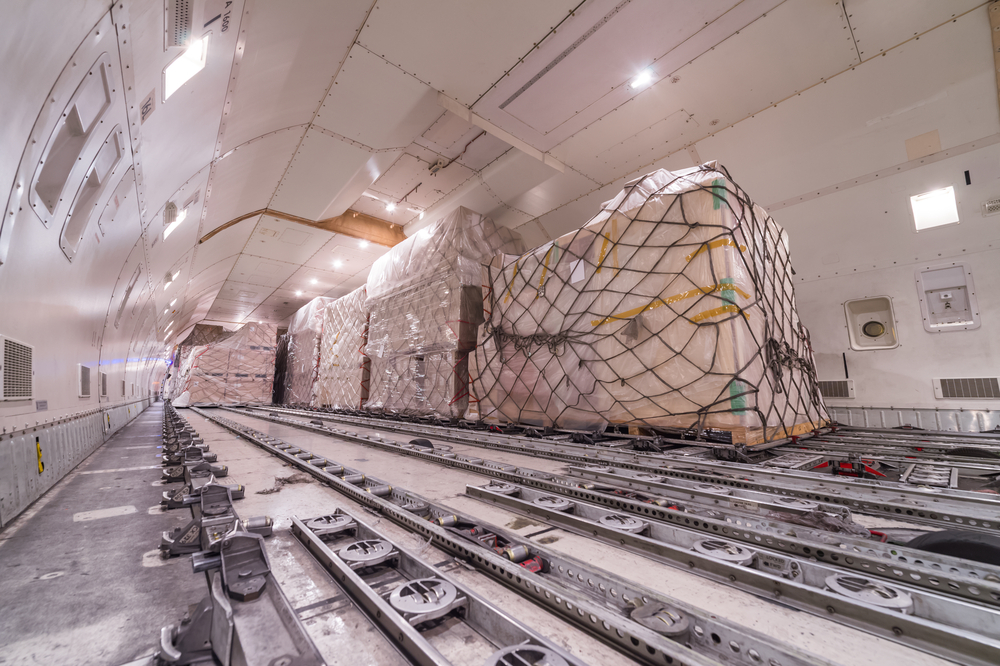Retail’s Red Sea move feeding airfreight volumes?
19 / 01 / 2024

Credit: tratong/ Shutterstock
Signs are starting to emerge that retail shippers are sending more goods by airfreight as the Red Sea crisis continues, but the next few weeks will determine whether there is a real shift from ocean freight to airfreight, according to Xeneta.
Niall van de Wouw, Xeneta chief airfreight officer, said: “When the Red Sea crisis escalated in December we stated that, once the impact starts to be felt in airfreight, things could happen very quickly.
“In the next two weeks, we should know for sure if this represents a genuine and significant shift from ocean to air freight due to the Red Sea crisis.”
The ocean and airfreight rate benchmarking platform said that consumer retail and apparel businesses are beginning to ship more of their goods by air to protect their supply chains as the Red Sea-Suez Canal disruption continues.
Xeneta’s data does appear to support increased interest in airfreight from retail businesses.
The company said its latest data, released on January 19, showed air cargo volumes from Vietnam to Europe – a major trade route for apparel – spiked 62% in the week ending January 14.
This is also 6% higher than 2023’s peak week in October and a 16% increase on the volumes recorded in the same week 12 months ago.
“This is the first signal in Xeneta data that the Red Sea crisis is impacting airfreight. This is typically a quieter time of year for airfreight so to see increases of this magnitude, with higher volumes than at any point in 2023, is significant,” said van de Wouw.
“Routes from Vietnam to Europe are used heavily for apparel, a sector we have been told is switching more goods from ocean to air due to the Red Sea crisis, so it is particularly noteworthy we are seeing volumes increase to such an extent on this trade.”
However, he noted that the normal Chinese New-related increases in air cargo volumes may be a factor.
“We should also recognise that the upcoming Lunar New Year may also be contributing to the increase in volumes.”
Airfreight rates from Vietnam to Europe have increased by 10% compared to last week, but with increasing volumes putting pressure on capacity and load factor, costs could be set to rise further.
Up until now, there has been no definitive increase in air cargo demand as a result of the crisis, some industry stakeholders say.
However, others in the industry believe there is a slow and steady increase in demand yet to come, if the crisis continues.
Meanwhile, WorldACD’s latest data shows that there may be some shift to air and sea/air solutions.
It said that preliminary figures for the week ending January 14 indicate that global air cargo tonnages rose 24% compared with the previous week.
Although there is usually a strong bounce back after the Christmas break, WorldACD noted that last year the week-on-week increase stood at the lower amount of 19%.
“There have been anecdotal reports in recent days of cargo owners switching some cargo from sea to air because of longer ocean voyages caused by the disruptions in the Red Sea,” WorldACD said.
“Although it’s unclear yet to what extent this has contributed to air cargo demand, those elevated tonnage figures to Europe from Asia Pacific and from Middle East & South Asia likely reflect some contribution from modal shift on these lanes from sea to air and to sea-air.”
TAC freight rate data for the week ending January 21 shows that prices are “still not rising as rapidly as many pundits have been expecting given disruption to ocean shipping in the Red Sea”.
Summing up the current market conditions, Scan Global Logistics said that airfreight was enjoying ocean freight tailwind; however, no volume tsunami is in sight.
“An increase in airfreight, sea-air, and rail freight volumes is apparent, but not at a magnitude with the potential for significant disruption,” the forwarder said.
“This development is expected to be sustained until the Lunar New Year, and as a natural consequence, airfreight rates have also increased in recent weeks.”
Red Sea-related demand yet to materialise but enquiries rise
Gradual increase in airfreight expected as Red Sea crisis could last months













